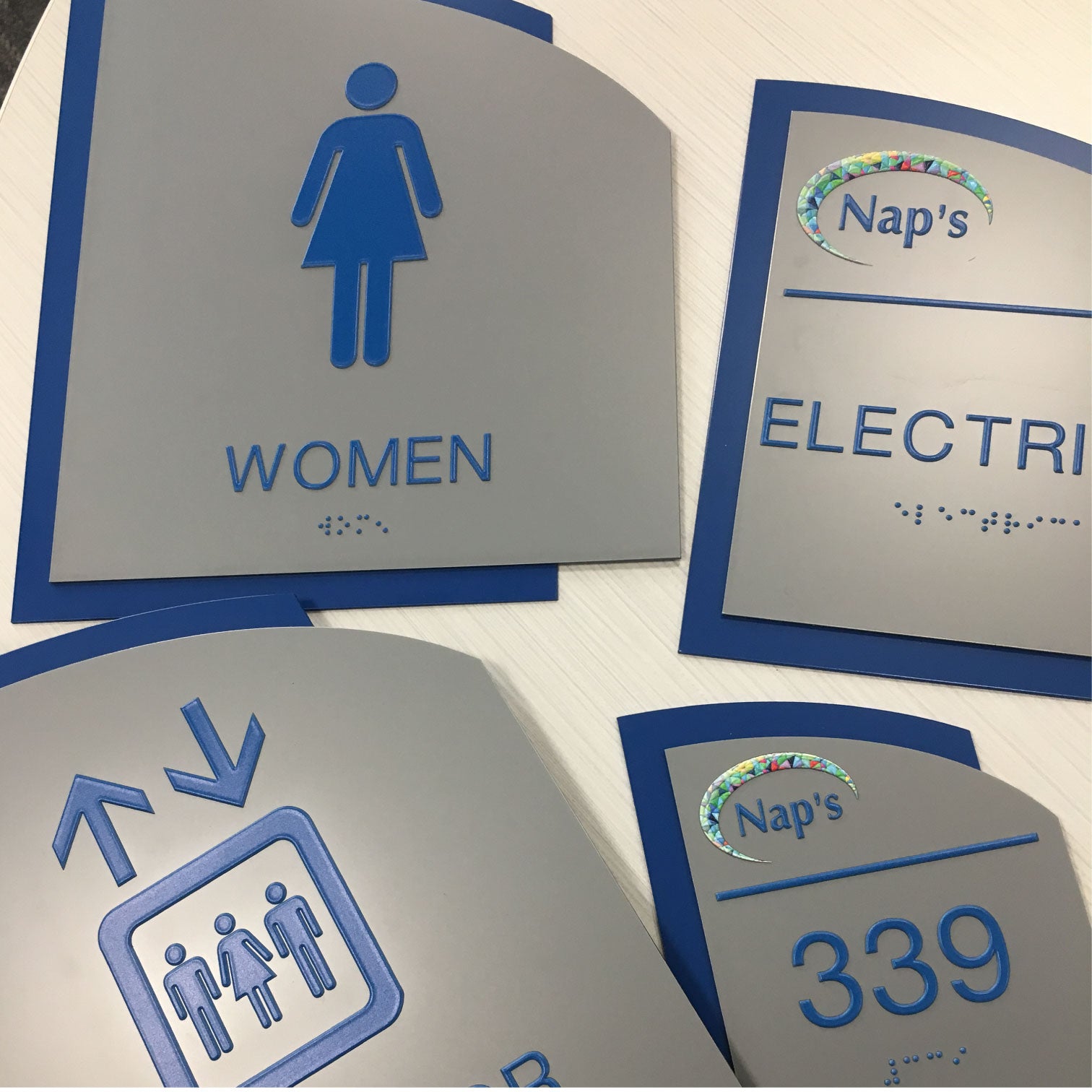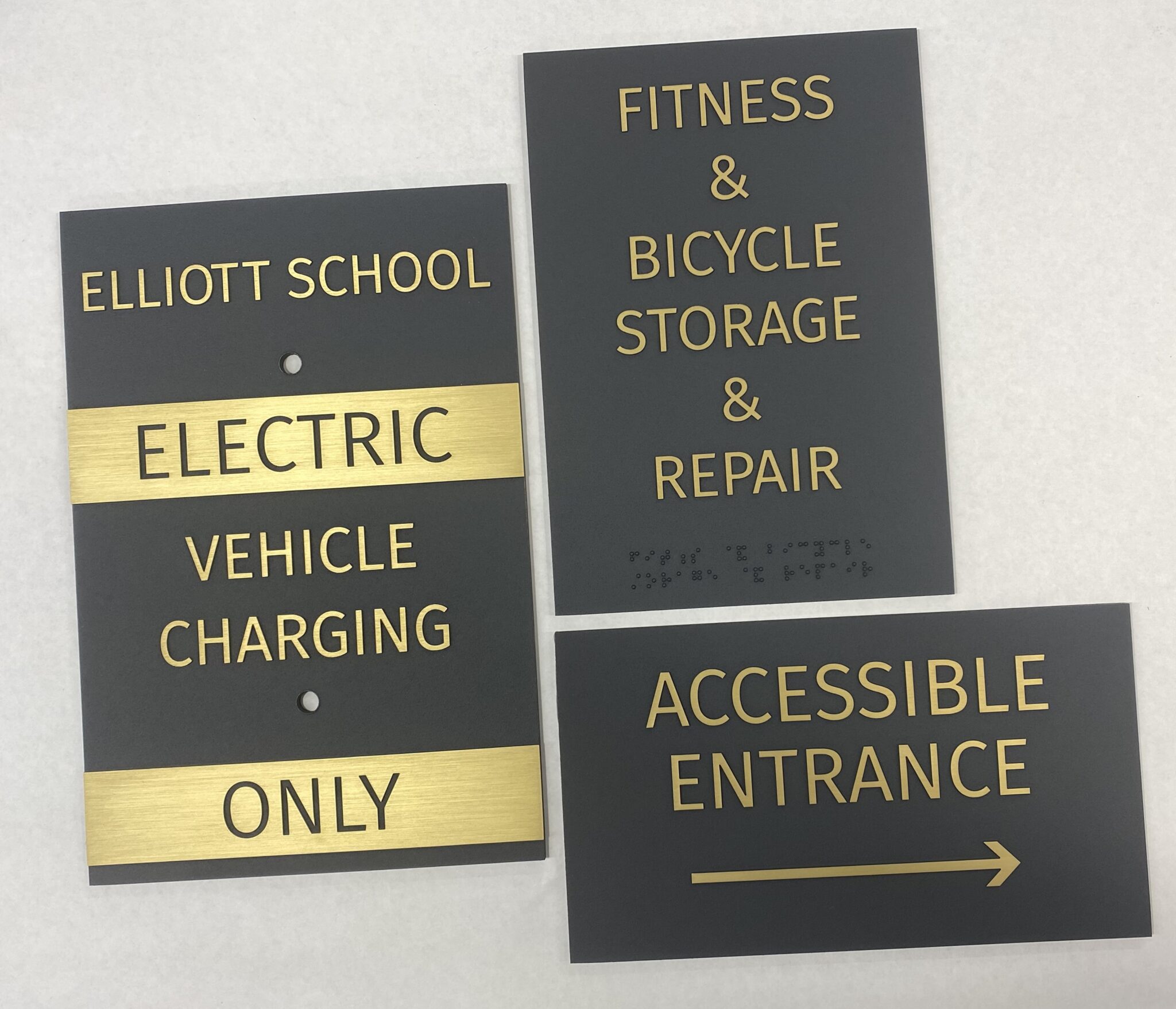The Role of ADA Signs in Adhering To Ease Of Access Specifications
The Role of ADA Signs in Adhering To Ease Of Access Specifications
Blog Article
Checking Out the Trick Features of ADA Indicators for Enhanced Accessibility
In the realm of availability, ADA indications serve as quiet yet powerful allies, ensuring that areas are navigable and inclusive for people with disabilities. By integrating Braille and tactile aspects, these indications damage obstacles for the visually damaged, while high-contrast color schemes and readable font styles accommodate varied visual requirements. Their strategic placement is not arbitrary yet rather a computed initiative to promote smooth navigating. Yet, beyond these features exists a deeper narrative about the evolution of inclusivity and the continuous commitment to producing equitable areas. What extra could these indications signify in our pursuit of global access?
Importance of ADA Conformity
Making certain compliance with the Americans with Disabilities Act (ADA) is important for promoting inclusivity and equivalent access in public spaces and workplaces. The ADA, passed in 1990, mandates that all public centers, employers, and transportation solutions fit individuals with impairments, guaranteeing they enjoy the very same legal rights and chances as others. Compliance with ADA criteria not only fulfills legal commitments yet likewise boosts an organization's credibility by showing its dedication to diversity and inclusivity.
One of the essential elements of ADA conformity is the implementation of obtainable signs. ADA indicators are developed to make certain that people with specials needs can easily navigate through areas and buildings.
In addition, sticking to ADA regulations can alleviate the risk of possible penalties and lawful repercussions. Organizations that fall short to abide by ADA standards may face claims or fines, which can be both monetarily challenging and harmful to their public picture. Therefore, ADA compliance is integral to promoting an equitable setting for every person.
Braille and Tactile Aspects
The unification of Braille and tactile aspects right into ADA signage symbolizes the concepts of access and inclusivity. These attributes are essential for individuals that are visually damaged or blind, enabling them to browse public rooms with greater self-reliance and self-confidence. Braille, a responsive writing system, is vital in supplying composed info in a format that can be easily perceived through touch. It is typically placed below the equivalent text on signage to make certain that individuals can access the details without visual help.
Responsive aspects extend past Braille and consist of elevated symbols and characters. These components are created to be discernible by touch, enabling people to determine room numbers, restrooms, leaves, and various other important locations. The ADA establishes certain standards concerning the size, spacing, and positioning of these responsive elements to optimize readability and ensure uniformity throughout different settings.

High-Contrast Shade Schemes
High-contrast color pattern play a critical role in improving the presence and readability of ADA signage for individuals with visual impairments. These schemes are important as they optimize the distinction in light reflectance in between message and background, ensuring that indicators are easily discernible, even from a range. The Americans with Disabilities Act (ADA) mandates using specific color contrasts to fit those with limited vision, making it a critical element of compliance.
The effectiveness of high-contrast shades exists in their capability to stick out in various lights conditions, including dimly lit settings and areas with glow. Normally, dark message on a light history or light text on a dark background is employed to attain optimal comparison. Black text on a yellow or white history supplies a stark visual distinction that assists in quick acknowledgment and understanding.

Legible Fonts and Text Dimension
When thinking about the style of ADA signs, the choice of legible fonts and appropriate message size can not be overemphasized. The Americans with Disabilities Act (ADA) mandates that fonts need to be not italic and sans-serif, oblique, script, very decorative, or of uncommon type.
The dimension of the text also plays an essential duty in accessibility. According to ADA standards, the minimum text height need to be 5/8 inch, and it must enhance proportionally with seeing range. This is specifically crucial in public spaces where signage needs to be checked out quickly and accurately. Uniformity in text dimension contributes to a natural visual experience, assisting people in browsing settings efficiently.
Moreover, spacing in between why not try here lines and letters is essential to legibility. Ample spacing protects against personalities from showing up crowded, improving readability. By sticking to these requirements, developers can considerably boost access, ensuring that signs serves its intended function for all individuals, no matter their visual capacities.
Effective Placement Methods
Strategic placement of ADA signage is crucial for maximizing ease of access and making certain compliance with lawful standards. Appropriately located indications guide individuals with specials needs efficiently, facilitating navigating in public spaces. Trick factors to consider include exposure, distance, and elevation. ADA guidelines state that indicators must be placed at an elevation in between 48 to 60 inches from the ground to guarantee they are within the line of view for both standing and seated people. This basic elevation variety is important for inclusivity, allowing mobility device users and individuals of varying heights to access details effortlessly.
Additionally, indicators have to be placed surrounding to the lock side of doors to enable simple identification before entrance. Consistency in sign positioning throughout a center boosts predictability, decreasing confusion and enhancing overall customer experience.

Verdict
ADA signs play an essential role in advertising ease of access by incorporating functions that address the demands of people with impairments. Integrating Braille and responsive components guarantees important information is easily accessible to the aesthetically damaged, while high-contrast shade systems and legible sans-serif font styles enhance visibility throughout different lighting problems. Efficient positioning methods, such as suitable mounting elevations and tactical places, even more assist in navigation. These components collectively cultivate an inclusive atmosphere, visit this site right here emphasizing the relevance of ADA conformity in making certain equal accessibility for all.
In the world of accessibility, ADA signs offer as silent yet powerful allies, guaranteeing that rooms are navigable and comprehensive for people with specials needs. The ADA, established in 1990, mandates that all public facilities, companies, and transportation solutions fit people with disabilities, guaranteeing they take pleasure in the same rights and chances as others. ADA Read Full Report Signs. ADA signs are created to make sure that people with specials needs can easily navigate through buildings and rooms. ADA standards stipulate that indications need to be installed at a height in between 48 to 60 inches from the ground to ensure they are within the line of view for both standing and seated individuals.ADA indicators play an essential duty in promoting accessibility by integrating features that address the requirements of individuals with disabilities
Report this page